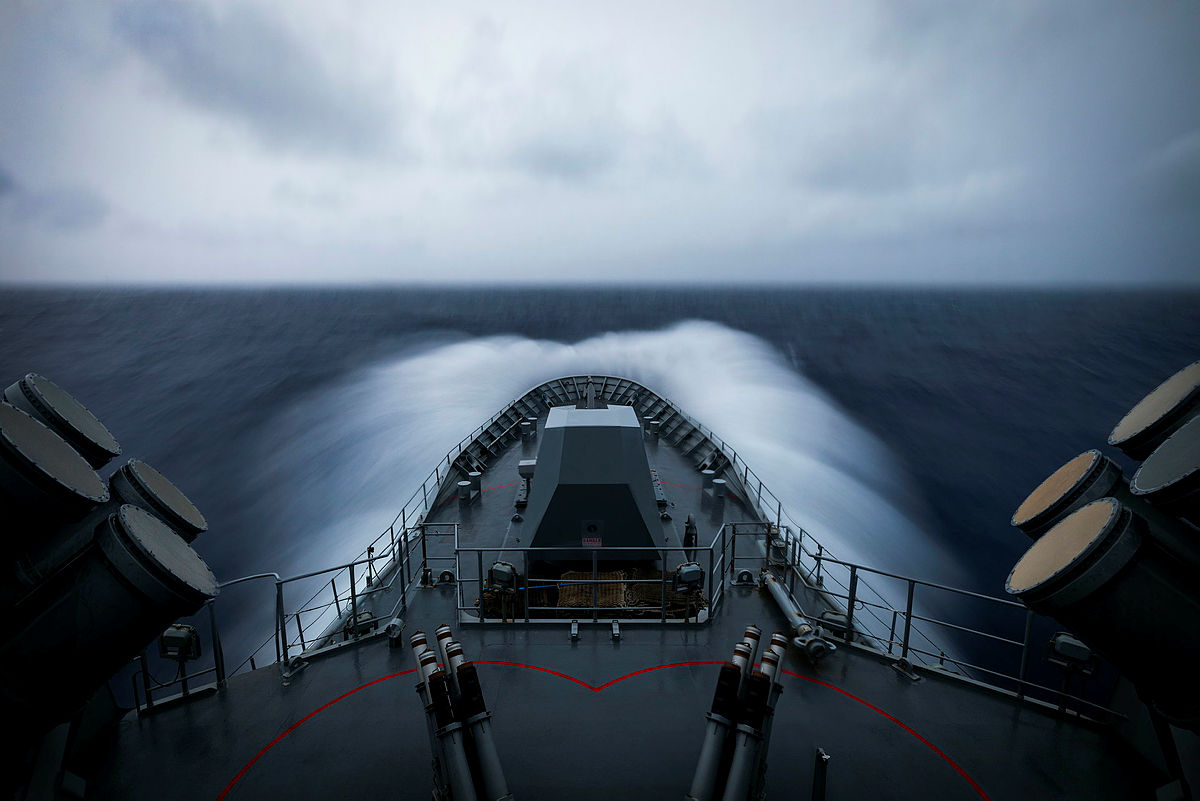
There will be much celebration of the Royal Australian Navy’s achievements at this week’s Indo-Pacific Sea Power Conference and maritime exposition. They are significant. Five years of Indo-Pacific Endeavour activities have demonstrated the navy’s ability to generate a robust taskforce and sustain it on extended deployments, and the upgrades to the Anzac-class frigates have provided a welcome boost to their capability.
But there are very dark clouds on the capability horizon. We are facing the strategic risk of both of the navy’s core combat fleets ageing out before replacements arrive.
Even before the Attack-class submarine program was cancelled many observers raised concerns about the viability of a transition that would see each of the Collins-class boats well into their 40s before they were replaced. Short of schedule miracles, the transition to a nuclear-powered submarine only exacerbates the risk. How will the navy generate many more submariners with a fleet of ageing conventional submarines?
Even if the Collins fleet can reliably get to sea, it’s hard to see it providing a robust deterrent into the 2040s. If the Attack was going to be obsolete when it was launched in the mid-2030s, as Scott Morrison has stated, how can a design that’s 40 years older do better?
The frigate situation is nearly as serious. The Anzacs might not be quite as old as the Collins when they are eventually replaced by the Hunter-class frigates, but they will always be limited by their small number of missile cells. A ship with eight launch cells coming up against ships with 64 or 96 is taking a knife to a gunfight. Unfortunately, the Hunter will only have 32 once it starts to enter service in the mid-2030s despite an acquisition cost of $45 billion, making it extremely poor value for money.
To embark on a highly risky transition with one of your combat fleets is dangerous; to do it with both simultaneously is careless.
While the government has delivered the increased funding it promised in the 2016 defence white paper, it is not being turned into capability. If you want to understand what’s going on with its delivery, follow the money; if you’re not spending money, you’re not getting capability.
The navy’s acquisition spending should have ramped up dramatically as the submarine and frigate programs matured. That was indeed the plan in 2020–21 defence budget, but it will fall dramatically short.
For the four years from 2020–21 to 2023–24, the navy’s acquisition spending will be $5.3 billion less than the $17.8 billion it was aiming to spend across those years.
In addition to the dollars not spent, there are the dollars spent for no capability return, most notably the $3.2 billion outlaid on the Attack program, with more to come once the financial settlement with Naval Group is finalised. It’s not just the wasted dollars, it’s the wasted time—something we can’t afford when, by the government’s own admission, our warning time has evaporated.
Certainly, the navy is acquiring new systems such as more modern missiles and drones, but there’s only so much it can do with the same ships.
Proposals to put Tomahawk land-attack missiles on the Hobart-class destroyers and Collins submarines have an air of desperation; the number of missiles that could be installed wouldn’t deliver a meaningful military effect and would take away weapons from the vessels’ other roles. It’s astounding that despite the government’s planned investment of $575 billion on defence this decade, the navy’s plan is not getting a single additional missile launcher to sea, let alone a new warship.
So, what’s to be done? Whoever wins the election will face tough decisions. The government will need to consider a wide range of options, many of which should come from outside the Department of Defence, which is clearly incapable of generating fundamentally new ideas.
A first step is to build on success. The one domestic shipbuilding program going well is the 1,800-tonne Arafura-class offshore patrol vessel. Unfortunately, it brings virtually no lethality to the fight as it’s currently configured. Nevertheless, the navy has steadfastly resisted calls to explore putting anti-ship missiles or towed-array sonars on them. But as we can see from the Ukraine war, when you are in a desperate fight, every little bit of capability helps. It’s also shown how a small number of anti-ship missiles can have a dramatic effect.
There are tough conversations to be had about the frigate program where we need to implement a Plan B. That may involve cancelling the Hunter and acquiring a different vessel, or continuing with the Hunter but also pursuing additional vessels, such as more Hobart-class destroyers.
These solutions may require significant parts of the work to be done overseas to get capability quickly, but another lesson from Ukraine is that in a crisis you accept help from wherever it may come.
There are similar conversations to be had about submarines. Again, pursuing additional capability quickly doesn’t necessarily mean abandoning the future nuclear-powered attack submarines enterprise. But as potential threats get closer to Australia, smaller, affordable conventional submarines that can operate stealthily in the archipelagos to our near north look increasingly attractive as a gap filler.
Other solutions involve relying less on large, complex warships that take decades to design and build and involve major cost, technical and schedule risk.
Exploring ‘mosaics’ of smaller, less complex systems requires different thinking and appetite for risk. The recent announcement that Anduril has been funded to rapidly develop an extra-large autonomous undersea vehicles suggests that this approach is starting to take hold in Defence (likely with some forceful prompting from Defence Minister Peter Dutton).
There are no easy solutions. The first step is to acknowledge we have a serious problem that will only get worse. It’s not tenable to simply repeat the mantra of holding course and managing the (hopefully) graceful degradation of the Anzac and Collins fleets until their replacement is complete in the late 2040s.
Potential adversaries are not going to wait 25 years.

